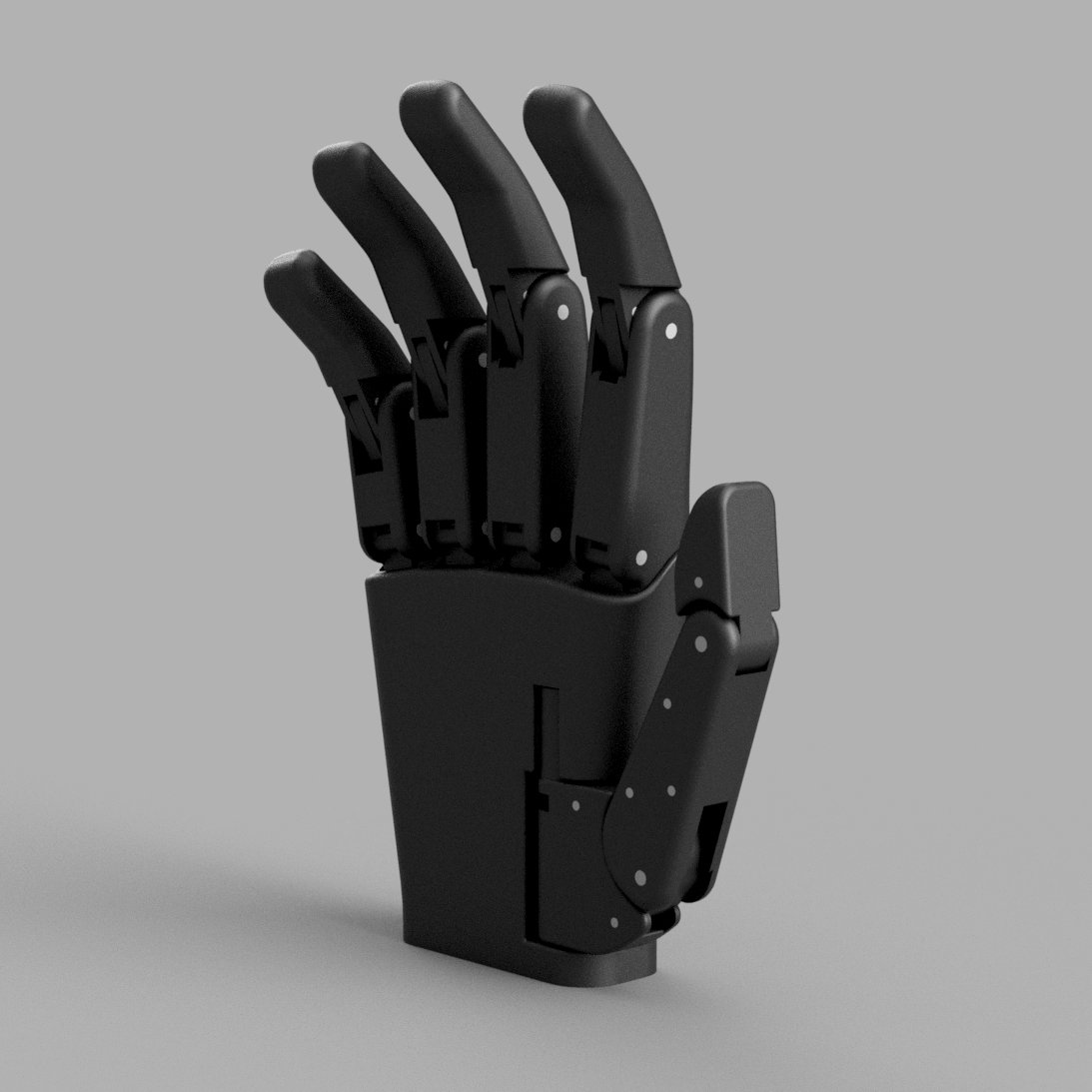Describtion
This technical project aims to provide a solution to a major health problem faced by millions of people worldwide - the loss of limbs. My solution is an affordable and adaptable anthropomorphic bionic hand, designed for 3D printing, that can help people regain a degree of independence and functionality that they may have thought was lost forever. The hand is constructed using state-of-the-art technologies and materials that have been specifically chosen to optimize strength, durability, and affordability. The device is also designed to be easy to assemble and operate, making it accessible to as many people as possible.
Goal
My goal is to develop and manufacture an affordable and adaptable anthropomorphic bionic hand, designed for 3D printing, that can help millions of people in need of replacing lost limbs. My primary objective is to provide a high-quality solution that is both effective and affordable, thereby ensuring that people who need this device can access it without undue financial hardship. By providing a solution that is both accessible and effective, we hope to change the lives of people who are living with the challenge of limb loss.
Features
- The placement of finger actuators in the palm area, rather than in the forearm, provides greater control over finger movement and increases the device’s overall dexterity and flexibility.
- The design of the device has been adapted to take advantage of additive manufacturing technologies, including accounting for anisotropic properties of the structure during design to increase its strength. This approach also reduces the overall cost of the device, making it more accessible to people who need it.
- Finger position retention even when power is lost ensures that the device is safe and reliable to use at all times.
- Easy to assemble in less than 24 hours, using readily available tools and materials. This feature ensures that people who need the device can access it quickly and easily.
- The cost of the device is less than $200 in production, making it affordable for people in developing countries and low-income communities.
Challenges
- Developing actuators for each finger to allow independent finger control.
- Creating a reliable grip system that can hold various objects securely.
- Designing an efficient control system to manage the movement of the fingers.
- Ensuring the affordability of the device by reducing production costs, making it more affordable and accessible to people who need it.
Innovations
- Micro-motors N20 are used as finger actuators to enable independent finger control.
- NRF52832 is used as the primary controller to control motors using DC motor drivers.
- The complete 3D printing of the hand design (extluding fasteners, motors and PCBs) reduces the need for post-processing and increases the strength and durability of the structure.
ToDo list
- Testing the revised kinematics for the drive of the main fingers and increasing the strength of the structure (DeltaBionics Rev2.0).
- Modelling and testing a new design using a cable system rather than a rigid drive to reduce the overall size of the device (DeltaBionics Flex Rev1.0).
- Modelling and testing a unique device that can be controlled remotely (DeltaBionics Remote Rev1.0).
- Conducting further testing of the overall performance of the device and refining its design to optimize its functionality and reduce its cost.
